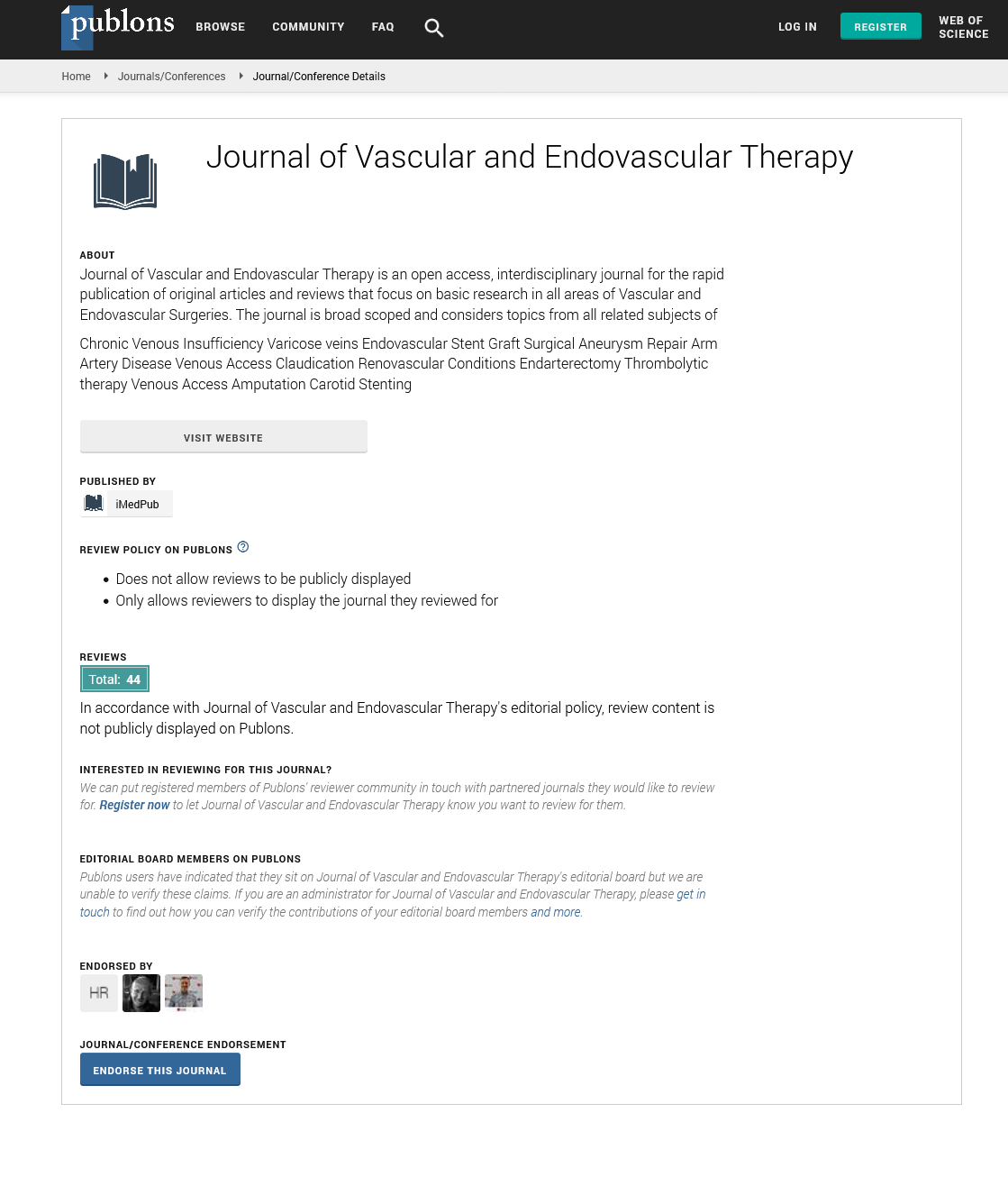Abstract
Temsirolimus Adventitial Delivery to Improve ANGiographic Outcomes below the Knee (TANGO)
Background: Current endovascular treatments of Below-The-Knee (BTK) popliteal or tibial/peroneal arteries including investigational drug-coated balloons have limited long- term efficacy.
Objectives: This Phase 2 trial assessed the feasibility of adventitial deposition of temsirolimus to reduce neointimal hyperplasia and clinically relevant target lesion failure 6 months after BTK arterial revascularization.
Methods: This prospective, multicenter, double-blinded, comparative, dose-escalation trial enrolled 61 patients with Rutherford 3-5 symptoms undergoing endovascular revascularization of â?¥ 1 angiographically significant BTK lesions. Perivascular infusion after completion of arterial revascularization was randomized into control (saline) vs. low-dose (0.1 mg/mL) temsirolimus groups for the first 30 patients. In the second part of the trial patients were randomized to control vs. high-dose (0.4 mg/mL) temsirolimus groups. Primary and secondary efficacy endpoints were target lesion Transverse-View Vessel Area Loss Percentage (TVAL%) and Clinically Relevant Target Lesion Failure (CR-TLF) at 6 months, respectively. CR-TLF was defined as a composite of ischemia-driven major amputation of the target limb, clinically driven target lesion revascularization, and clinically relevant target lesion occlusion. The primary safety endpoint was freedom from Major Adverse Limb Events or Perioperative Death (MALE+POD) at 30 days.
Results: There was no discernable difference in effect between temsirolimus doses, therefore the low- and high-dose cohorts were pooled for the analyses. The principal analysis on the per protocol group of 53 patients revealed superior primary efficacy of the treatment arm, with a reduction in TVAL% of 13.9% absolute (37.3% relative) and the rate of CR-TLF reduced by 27.1% absolute (51.3% relative), at 6 months. Subgroup analysis of all TASC B-D lesions (N=36) revealed TVAL% reduction of 22.3% absolute (48.3% relative) and the rate of CR-TLF reduced by 39.2% absolute (56.6% relative). Freedom from 30-day MALE+POD was 100% in all groups.
Conclusion: This hypothesis-generating trial suggests that adventitial infusion of temsirolimus in BTK arteries improves TVAL% and CR-TLF with no adverse safety signals through 6-months, supporting the move to a phase 3 trial.
Author(s):
Ian Cawich1 , Ehrin J Armstrong2 , Jon C George3 , Jaafer Golzar4 , Mehdi H Shishehbor5 , Mahmood Razavi 6 , Victoria Lee7 and Kenneth Ouriel8*
Abstract | Full-Text | PDF
Share this

Google scholar citation report
Citations : 177
Journal of Vascular and Endovascular Therapy received 177 citations as per google scholar report
Journal of Vascular and Endovascular Therapy peer review process verified at publons
Abstracted/Indexed in
- Google Scholar
- Open J Gate
- Publons
- Geneva Foundation for Medical Education and Research
- Secret Search Engine Labs
Open Access Journals
- Aquaculture & Veterinary Science
- Chemistry & Chemical Sciences
- Clinical Sciences
- Engineering
- General Science
- Genetics & Molecular Biology
- Health Care & Nursing
- Immunology & Microbiology
- Materials Science
- Mathematics & Physics
- Medical Sciences
- Neurology & Psychiatry
- Oncology & Cancer Science
- Pharmaceutical Sciences


